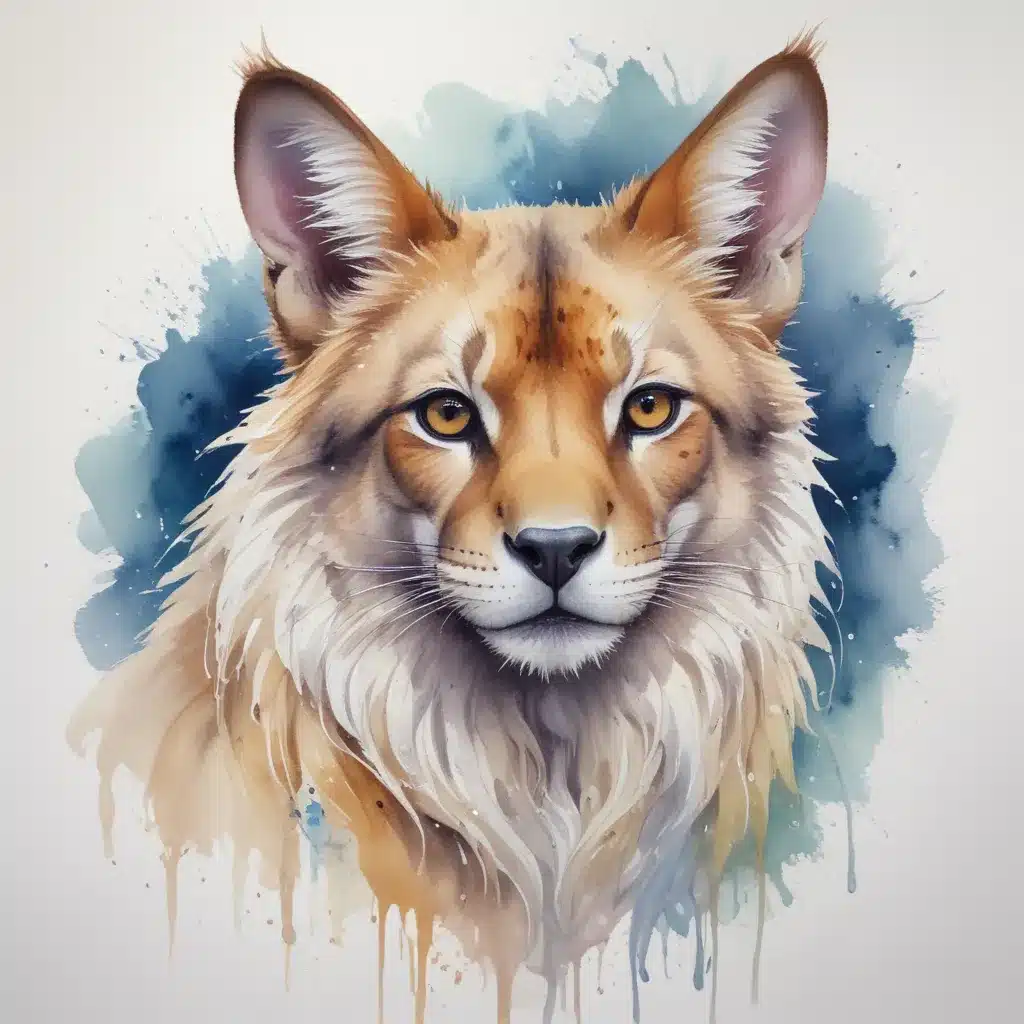
Watercolour painting is a wonderfully fluid medium, allowing artists to capture the essence of their subjects with bold, expressive brushwork. In our 15 years installing… This versatile technique lends itself beautifully to the creation of enchanting animal artworks, where the inherent unpredictability of the paint can transform simple shapes into captivating, lifelike creatures.
In this comprehensive guide, we’ll explore the key watercolour techniques that can elevate your animal paintings, from wet-on-wet washes to layered glazes. We’ll also delve into the importance of composition, color theory, and creative inspiration, equipping you with the knowledge to breathe life into your whimsical animal artworks.
Mastering the Watercolour Basics
At the heart of every successful watercolour painting lies the artist’s command of the medium. Watercolour is all about balance — too little water and the paint will appear parched, too much and it will become uncontrollable. Finding that sweet spot is essential for creating vibrant, luminous artworks.
Embrace the fluid nature of watercolour by harnessing the wet-on-wet and wet-on-dry techniques. The former produces soft, hazy backgrounds, while the latter allows for sharp, defined details. Mastering this yin and yang is crucial for traversing the realms of expression, from dreamlike landscapes to striking animal portraits.
As artist Louise Demasi explains, “Watercolour is like a box of chocolates — you never know what you’re going to get. But here’s the secret: that’s where the magic happens. Those unexpected colour blooms? They’re not mistakes; they’re opportunities for unique textures and effects that can’t be replicated with any other medium.”
Lean into these happy accidents and let the paint do its thing. Embrace the unpredictability and use it to your advantage, creating interesting textures and unique visual effects that breathe life into your animal subjects.
Transparency and layering are also key to achieving depth and luminosity in your watercolour paintings. Build up your colours from light to dark, allowing each layer to dry fully before adding the next. This strategic approach ensures your hues remain vibrant and avoid becoming muddy.
Remember, the white of the paper is your secret weapon. Plan ahead to leave key areas untouched, allowing the bright white to create contrast, draw the eye, and add a sense of sparkle to your work. Masking fluid can be a helpful tool for preserving those essential highlights.
Painting Expressive Animals
With a firm grasp of the fundamental watercolour techniques, you can begin to apply them to the creation of captivating animal artworks. Whether you’re depicting a majestic wild creature or a beloved household pet, the same principles apply.
Start by observing your subject closely, taking note of its unique features, expressions, and body language. This deep understanding will inform your artistic choices and help you to capture the essence of the animal on the page.
When it comes to composition, consider how the animal’s form can be used to create a visually striking arrangement. Play with angles, framing, and negative space to draw the viewer’s eye exactly where you want it to go.
Colour is another vital element in bringing your animal to life. Experiment with vibrant hues and bold brushstrokes to convey the creature’s energy and personality. Don’t be afraid to take creative liberties and infuse your work with a touch of whimsy — after all, watercolour is the perfect medium for magical realism.
As artist David Hill suggests, “My style changes to suit the demographic of each particular job. As a professional illustrator, I think it’s beneficial if you can adapt your style to encompass a variety of situations and not limit yourself to a single area of the market.”
Illustrator Saturday – David Hill
When painting animals, be mindful of anatomical accuracy, but don’t get bogged down in intricate details. Instead, focus on capturing the essence of your subject through fluid, expressive brushwork. The beauty of watercolour is in its ability to suggest rather than render, allowing the viewer’s imagination to fill in the blanks.
Fueling Your Creative Process
Inspiration is the spark that ignites the creative process, and when it comes to painting enchanting animal artworks, the well of inspiration runs deep. Look to the natural world for captivating subjects, from majestic wildlife to beloved household pets.
Embrace your curiosity and sense of wonder as you observe the world around you. Allow your imagination to take flight, blending realistic elements with fantastical flourishes. Anthropomorphic animals, whimsical environments, and magical realism are all fair game when working in the watercolour medium.
As you embark on your artistic journey, remember to cultivate a creative mindset that nurtures resilience, openness, and a willingness to embrace the unexpected. Watercolour, with its inherent unpredictability, is the perfect medium for an artist who is comfortable with the unknown and eager to let their work evolve organically.
Seasoned watercolourist Louise Demasi advises, “Watercolour has a mind of its own, and that’s part of its charm. Learn to go with the flow—literally—and let those happy accidents add character and interesting texture to your work.”
Invest in quality materials, from 100% cotton watercolour paper to professional-grade paints and brushes. These tools will provide you with the foundation to create your best work, allowing you to focus on the joy of the creative process.
Finally, don’t be afraid to experiment and take risks. Watercolour is a medium that thrives on the unexpected, so embrace the journey and allow your artistic vision to evolve. With each brush stroke, you’ll unlock new possibilities and discover the true magic of the watercolour wonderland.
Whether you’re a seasoned artist or a curious beginner, the world of watercolour awaits, brimming with opportunities to create captivating animal artworks that capture the heart and imagination. So pick up your brush, dive into the rainbow of colour, and let the magic unfold.
Example: Pencil Portrait Challenge 2024